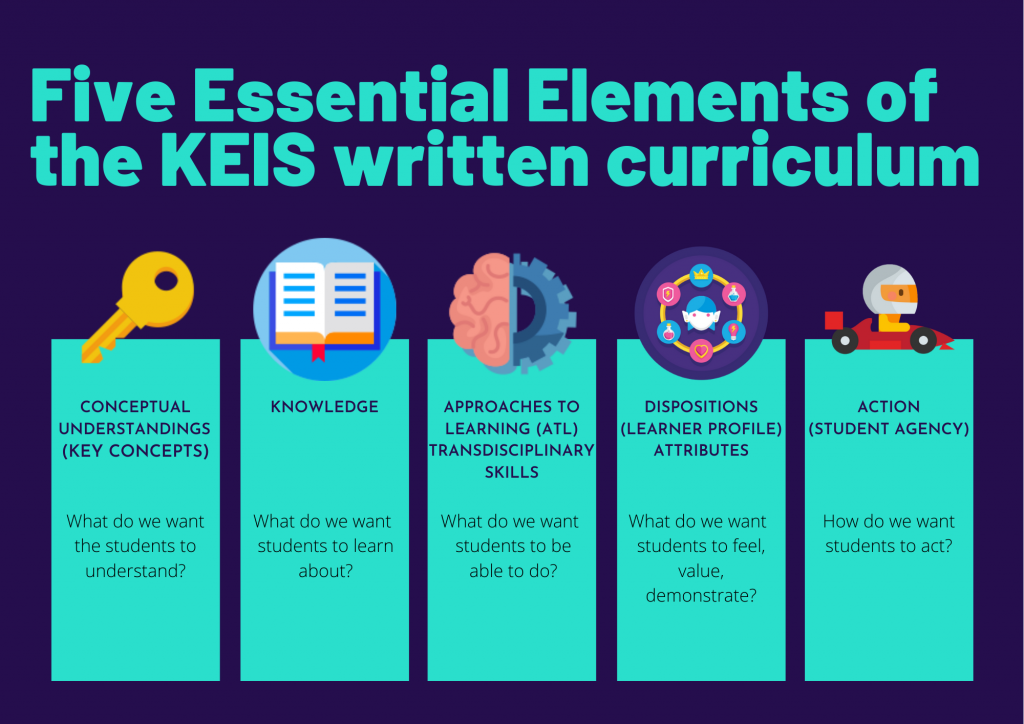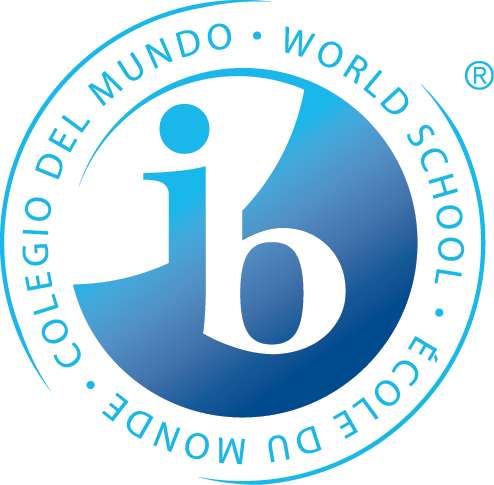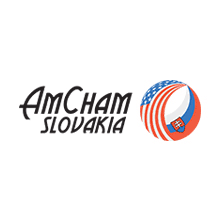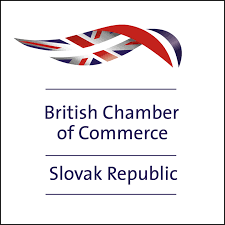Frequently Asked Questions – Kosice International School
How can I set up an appointment or speak with the Admissions Officer?
Please either call Ms. Alexandra Blaasova at +421 907 976 444 or register your expression of interest using Pre-Admission Form. You can find us in the quiet and green suburb of Košická Nová Ves at Poľná St., 10 minutes drive from the Kosice city centre.
What curriculum does KEIS follow?
KEIS provides the International Baccalaureate Primary Years Programme, the International Baccalaureate Middle Years Programme and has candidacy status in Diploma Programme. The programmes reflect best practices from around the world and align with current research and thinking in primary and secondary education. KEIS is fully authorised for the IB Primary Years Programme and the IB Middle Years Programme. As an IB World School in PYP and MYP, we share a common philosophy—a commitment to high-quality, challenging, international education that KEIS believes is important for our students.
Košice International School is a candidate school* for the DP. It is pursuing authorization as an IB World School. IB World Schools share a common philosophy—a commitment to high-quality, challenging, international education—that we believe is important for our students.
* Only schools authorized by the IB Organization can offer any of its four academic programmes: the Primary Years Programme (PYP), the Middle Years Programme (MYP), the Diploma Programme (DP), or the Career-related Programme (CP). Candidate status gives no guarantee that authorization will be granted. For further information about the IB and its programmes visit http://www.ibo.org.
When does the school year begin?
The new school year starts early September and ends in late June.
In which year group will my child be placed?
Candidates for admission will be placed in a year group according to their chronological age. However, as many pupils come from different countries or overseas and as school entrance ages and academic calendars differ from country to country, the school reserves the right to make the placement decision based on the child’s unique background and local legal requirements.
For example, if your child is already six years old, they will be in PYP 1 (Year 1) at KEIS.
Are students in primary receiving marks like those given in public school?
No. Our teachers use a wide range of teaching strategies and assessments to address each child’s individual needs.
Assessment at KEIS is an ongoing process of planning for differentiation and moving students to the next stage of learning. Teachers evaluate students’ prior knowledge and experience and monitor their achievements to refine teaching.
Grades are given based on the grading scale below:
KEIS Grading Scale Primary School
| Criteria | Description |
| Excelling | Exceeding the year-level expectations |
| Demonstrating | Meeting the year-level expectations |
| Developing | Working towards meeting the year-level expectations |
| Emerging | Needing support to meet the year-level expectations |
| N/A | Not Applicable: Not covered this term/not completed |
How are students assessed in primary?
Student assessment is a reflection of the five essential elements of the PYP.

Within these elements, we provide assessed evidence through both summative and formative means. In other words:
Formative assessment is aligned with the daily teaching practice. It provides teachers with information on students’ acquisition of knowledge and understanding, how they are learning and what instructional changes need to be made in the teaching and learning process.
Summative assessment is the culminating evaluation that allows students to demonstrate what they have learned within the inquiry learning process. It gives insight into students’ understanding of the central idea and provides information on how they have developed in the five essential elements.
Assessment strategies
KEIS educators apply a range of assessment strategies that allow them to gather evidence about student learning.
Assessment data collection is comprised of:
- Observations: focussing on teacher visual, verbal, anecdotal, photographic and video evidence on collaborative and individual learning situations
- Performance assessment: goal-directed tasks and criteria that allow students to apply various approaches to learning (ATL) skills for project and problem-solving
- Selected responses: single occasion, one-dimensional tasks such as tests and quizzes
- Open-ended tasks: scenario/stimulus-based problem-solving; students are asked to provide an original response
- Peer assessment: where students provide feedback to other students about their learning
- Self-assessment: the learner assesses their own work, thus developing their capacity to monitor and reflect on learning
- Formal assessments: structured, recorded assessments
- Informal assessment: when teachers and students make informed judgements and feedback about learning
How are students assessed in KEIS middle school and secondary school?
For each subject in the middle school, students’ knowledge and skills development is assessed using a set of rubrics called ‘Criteria’. Each subject has four Criteria (A, B, C, and D), which correspond to the broad learning goals for that subject. For example, the four criteria for Science are:
Criteria A: Knowing and understanding
Criteria B: Inquiring and designing
Criteria C: Processing and evaluating
Criteria D: Reflecting on the impacts of science
Every criterion has eight achievement levels (Level 1 to Level 8), with descriptors for each, to clarify expectations of skills & knowledge at each level and to help students monitor and reflect on their growth.
Over the course of the year, teachers provide students with various assessment tasks. These criteria guide them to make a professional and informed judgement about the student’s achievement level. Each criterion is assessed at least twice in an academic year. For each assessment cycle, teachers arrive at an achievement level for each Criterion using a “best fit” approach based on the student’s performance across the different assessment tasks.
The ‘best-fit’ achievement levels for the four criteria are added together to arrive at a total of 32. Using the MYP grade boundaries, this total score is converted to a final Grade between 1 and 7, with 7 being the highest. These are generated as interim grades and final grades at the end of the academic year. Please refer to the table below to understand how the conversions are made.
IB boundary guidelines and grade descriptors
| Final Grade | Boundary Guidelines | Descriptor |
| 1 | 1-5 | Produces work of very limited quality. Conveys many significant misunderstandings or lacks understanding of most concepts and contexts. Very rarely demonstrates critical or creative thinking. Very inflexible, rarely using knowledge or skills. |
| 2 | 6-9 | Produces work of limited quality. Expresses misunderstandings or significant gaps in understanding for many concepts and contexts. Infrequently demonstrates critical or creative thinking. Generally inflexible in the use of knowledge and skills, infrequently applying knowledge and skills. |
| 3 | 10-14 | Produces work of an acceptable quality. Communicates basic understanding of many concepts and contexts, with occasionally significant misunderstandings or gaps. Begins to demonstrate some basic critical and creative thinking. Is often inflexible in the use of knowledge and skills, requiring support even in familiar classroom situations. |
| 4 | 15-18 | Produces good-quality work. Communicates basic understanding of most concepts and contexts with few misunderstandings and minor gaps. Often demonstrates basic critical and creative thinking. Uses knowledge and skills with some flexibility in familiar classroom situations, but requires support in unfamiliar situations. |
| 5 | 19-23 | Produces generally high-quality work. Communicates secure understanding of concepts and contexts. Demonstrates critical and creative thinking, sometimes with sophistication. Uses knowledge and skills in familiar classroom and real-world situations and, with support, some unfamiliar real-world situations. |
| 6 | 24-27 | Produces high-quality, occasionally innovative work. Communicates extensive understanding of concepts and contexts. Demonstrates critical and creative thinking, frequently with sophistication. Uses knowledge and skills in familiar and unfamiliar classroom and real- world situations, often with independence. |
| 7 | 28-32 | Produces high-quality, frequently innovative work. Communicates comprehensive, nuanced understanding of concepts and contexts. Consistently demonstrates sophisticated critical and creative thinking. Frequently transfers knowledge and skills with independence and expertise in a variety of complex classroom and real-world situations. |
How do I determine how my child is progressing in the Primary classroom?
There are several ways to see and hear about your child’s academic progress in his/her grade. We use the Toddleapp cloud application, which connects parents with teachers, students, and the whole class. The app supports student learning and proactive communication with the teacher. Parents can see student work, class activities, and learning progress and gain an understanding of the programme.
Every class hosts three-way and student-led conferences throughout the year. Additionally, you will receive report cards online each semester, and we do summative assessments at the end of the unit (six times a year). Parents may have the opportunity to be welcomed into learning experiences and summative assessments at various stages of a unit of inquiry.
Will my child have access to technology?
KEIS offers class iPads for every student, complemented by laptops for higher grades (middle school and secondary school). Students are not placed in front of technological devices to use individually. The teacher uses the devices to enhance teaching and learning. A blended learning approach (combining technology with real-world experiences) to planning lessons and inquiry activities is applied to support the collaborative and student-led approach. Besides Apple Classroom, Media Studio for school projects, Edison educational robots, 3D printers, ClassVR virtual reality headsets, lot of other educational apps are used at KEIS.
What are the key differentiators between inquiry-based learning at KEIS and traditional learning? I have seen that you don’t provide the usual textbooks in Primary classes. How do you know the students will learn something?
PYP learning is a joyful experience. Teachers are always finding ways to support students to find their ‘aha’ moments. Knowledge and skills are attained through personal exploration and endeavor, through carefully selected learning opportunities created by teachers. Inquiry may look different than a traditional classroom. You will rarely see students in rows reading the same text. Depending on their questions, students will ‘find out’ in a way that is most appropriate, so one student might be building with math manipulatives as another student conducts an interview on Zoom. We honor the different ways of knowing and learning and view learning as playful experimentation.
Is the Registration Fee refundable?
The Registration fee is a one-time payment per year, made upon confirmation of a place, and is not refundable.
Do candidates for admission have to sit an entry test?
Generally, student reports from previous schools provide sufficient evidence of a child’s academic level and achievements. In some cases, however, KEIS may require students to sit our entrance test. We also test English language skills from Grade 7 up.
How will my non-English speaking child manage in a school with English as the language of instruction?
KEIS provides English language support classes based on individual student needs and abilities. In the PYP, some assistance hours may be allocated either in class or through out-of-class support. Extra short-term support is given to new students who enter the school with limited or no understanding of the languages used. Specialist language teachers support the students within regular classroom lessons and one-to-one or small groups with intensive development sessions.
The Slovak language is also a language subject taught at KEIS. We also deliver Spanish lessons from Year 3 onwards.
What does the transdisciplinary approach mean? I have not seen some standard subjects in your timetables, like Maths or English in Primary school. How do we know my kids will get the needed knowledge?
Unlike traditional schools, where subjects and skills are taught separately, at KEIS, we organize our learning to help students make connections and see how big ideas are related. We do this by identifying big, real-world problems and using the subjects as a discipline to solve those problems. These real-world problems become avenues for us to teach multiple subjects; therefore, we call our teaching and learning transdisciplinary. We learn English and maths in everything we do – our students don’t have to ask, “When will I need to use trigonometry in real life?” because they learn about it within real-world problems.
Would my kids learn less, e.g., in Maths or Sciences than at the other schools, as the IB Learner Profile also emphasizes other areas like soft skills?
In 2016, a study by the World Economic Forum found that 65% of children entering primary school today will ultimately end up working in completely new job types that don’t yet exist. The learner profile and approaches to learning teach students how to thrive in an uncertain but always changing landscape. The focus isn’t on how we learn, not what we learn only. Social-emotional learning is an essential part of this.
How does the school day looks like in KEIS Primary School?
We start the morning with free play for our early arrivals, and then at 8.15 students are collected by their homeroom teacher. We have outdoor recess at 10.10 and again before or after eating lunch. Students have a morning snack (inside in winter outside in summer). The rest of the day if determined by the needs of the class – we encourage outdoor learning, movement and research. We currently have specialist teachers for performing arts, PHSE and Slovak.
Where do students continue their secondary education upon leaving KEIS?
The students finishing Grade 6 of primary school can continue their studies at KEIS Middle School with an inquiry-based interdisciplinary programme. Currently (2024/25), we offer education from 3-16 years of age in kindergarten, primary school, middle school and secondary school (Grade 10 and 11 in 2025/26). We aim to provide an IB continuum up to 19 years by adding the IB Diploma Programme to our offer.
Is there a school canteen?
Yes, KEIS provides their students with a healthy lunch, which consists of soup, a main course, salad/dessert/fruit and a non-sweetened drink.
Does the school organise transport to and from school?
Yes, KEIS provides parents with morning and afternoon school shuttle buses within Kosice at extra cost.
Does the school offer an after-school care programme?
Yes. KEIS offers a before and after-school care programme. Before-school care is available Monday to Friday, from 7:30 a.m. and after school from 3:00 to 4:30 p.m. The after-school care programme is a play-based, extra-curricular programme of social learning and activities.
Are there after-school clubs/activities?
KEIS provides a range of extra-curricular clubs. The possibilities for after-school clubs depend on the availability of suitable coaches as well as the interest of parents. Club options are published at the beginning of each semester.




